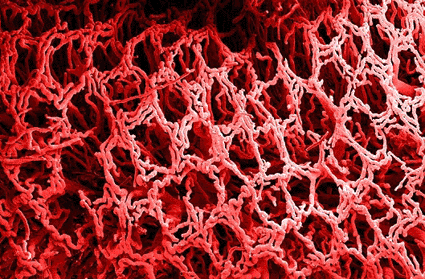Artificial Tissue Matrix Based on Cotton Candy Tubules
By LabMedica International staff writers
Posted on 03 Mar 2009
Researchers have used cotton candy as a basis for generating a network of capillary-sized tubules within a polymeric matrix designed to function as artificial tissue to treat injuries or burns.Posted on 03 Mar 2009
"For decades, the lack of a suitable blood supply has been the major limitation of tissue engineering,” explained senior author Dr. Jason Spector, assistant professor of surgery at Weill Cornell Medical College (New York, NY, USA; www.med.cornell.edu). "Without a network of blood vessels, only small, thin swaths of engineered tissue have longevity in the body.”

Image: Colored scanning electron micrograph (SEM) of a resin cast of blood vessels, a network of vessels that infiltrate the tissue, supplying it with blood (Photo courtesy of Clouds Hill Imaging).
To solve this problem Dr. Spector and his colleagues used a simple cotton candy maker to generate long, thin stings of crystalline sugar. A polymer was then poured over the sugar strands. After the polymer had hardened, the matrix was soaked in warm water, which dissolved the sugars and left behind a web of three-dimensional hollow micro-channels. Larger sugar structures were used to form an artificial inlet and outlet.
To verify that the channel network supported flow, the scientists used video fluorescence microscopy to image both two-micron fluorescent polystyrene spheres in an aqueous solution and blood cells labeled with a fluorescent marker. Results were published in the February 9, 2009, online issue of the journal Soft Matter.
The investigators concluded that, "The fabrication process may be applied to a wide range of polymeric materials and is rapid, inexpensive, and highly scalable.”
Related Links:
Weill Cornell Medical College













